Out of the Suitcase #39: Errata: a lesson on how change can be difficult...
Posted by Michael O'Brien on 14th Feb 2023
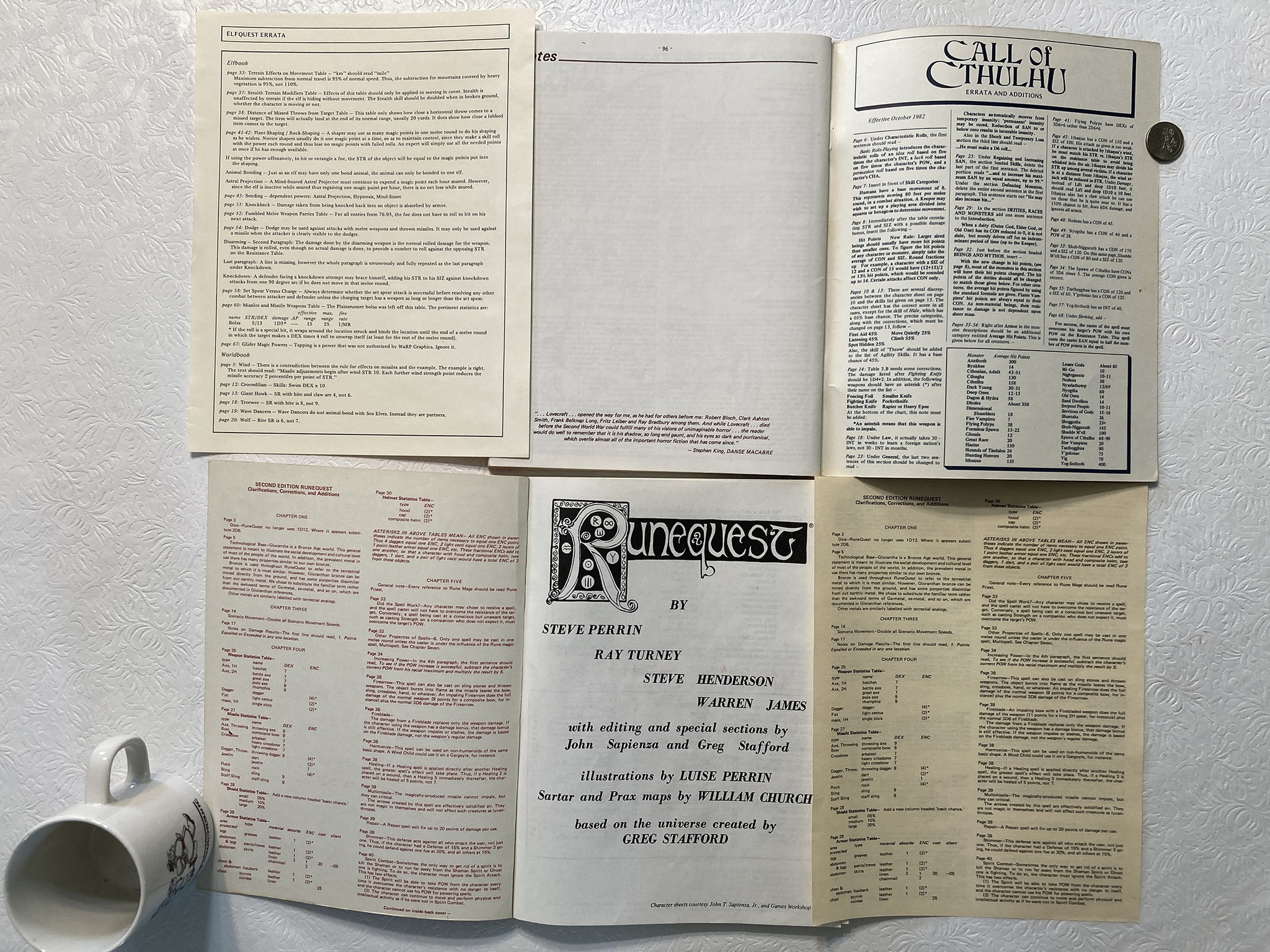
Chaosium President Rick Meints shares stories from a life-time as a collector of all things Chaosium.
All RPG publishers struggle with getting the rules for the first editions of their games right. No matter how much you playtest and refine the rules, perfection remains elusive. RPG players love to focus on details, have a keen eye for loopholes, and many honestly enjoy gaming the system (I certainly have on occasion).
Historically, Chaosium's small staff and limited resources while working within a "publish or perish environment" led to games rushed to market. For example, RuneQuest was rushed for the Origins 1978 convention. Call of Cthulhu was rushed for Halloween in 1981. Lords of the Middle Sea used a very small playtest group.
Fortunately though, Chaosium has always been very receptive to feedback, suggestions, and corrections from its fan base.
In the 70s and 80s that often meant letters from fans, or people visiting the Chaosium office. Probably one of the most famous examples of that would be when a 12-year old future billionaire Reid Hoffman dropped by the Chaosium office with his marked up copy of RuneQuest that he was keen to share with the authors. He impressed them so much that they offered him work on their forthcoming Borderlands project.
How Chaosium handled corrections and errata wasn't something I had thought that much about until recently, when Brian Holland showed me some photos of his recently acquired vintage RuneQuest rulebook. One photo was of the inside front cover and Brian wanted to confirm if it was the second edition from around 1980, which I verified as correct. Being me, I also told him that four of the eight printings of that book had the errata like in his copy, as opposed to being on a separate sheet of paper tucked into the RQ2 boxed set or not having errata at all.
Later that day I started grabbing various boxed sets and books off of the shelf to see how they handled errata.
Errata started with the first Chaosium publication, White Bear & Red Moon in November of 1975. Greg immediately started receiving letters from his first customers, letters full of compliments, criticism, confusion, and corrections. Those letters motivated him to create Wyrms Footnotes magazine in 1976 to communicate this information with his audience as a whole, plus make some money in the process.
Wyrms Footnotes included articles for this sort of feedback in almost every issue and spanning a variety of its games.
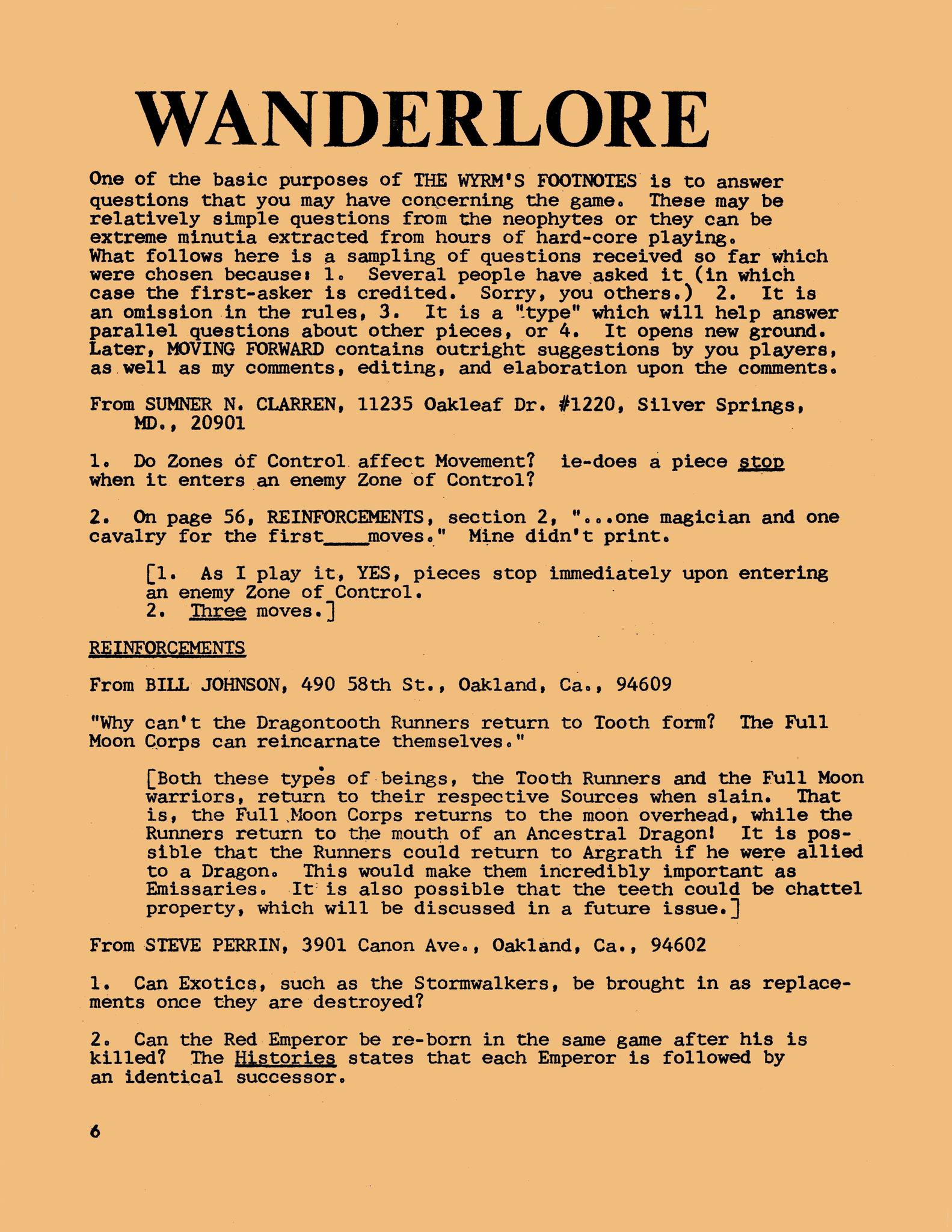
-- Page 6 of Wyrms Footnotes #1 (1976), including White Bear & Red Moon rules questions from none other than Steve Perrin --
Different Worlds magazine also ran articles detailing errata, such as issue #19 (February 1982) that contained a page for Call of Cthulhu (below).
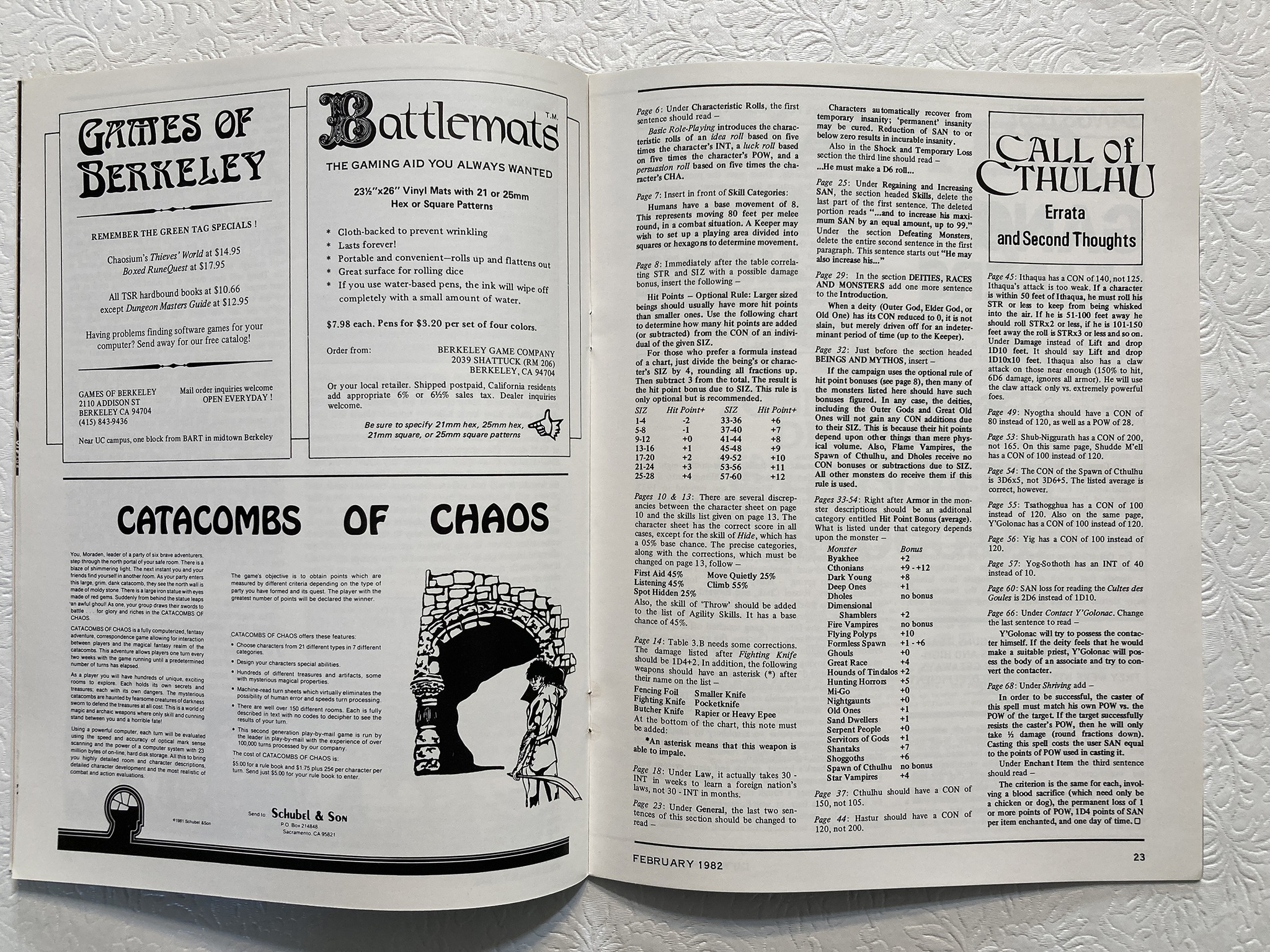
As games were reprinted, errata sheets started appearing with those games. Lords of the Middle Sea was one of the first where such a sheet was included, even though it was not ever reprinted. A slow seller, they just added it to all the remaining copies they still had in the warehouse.
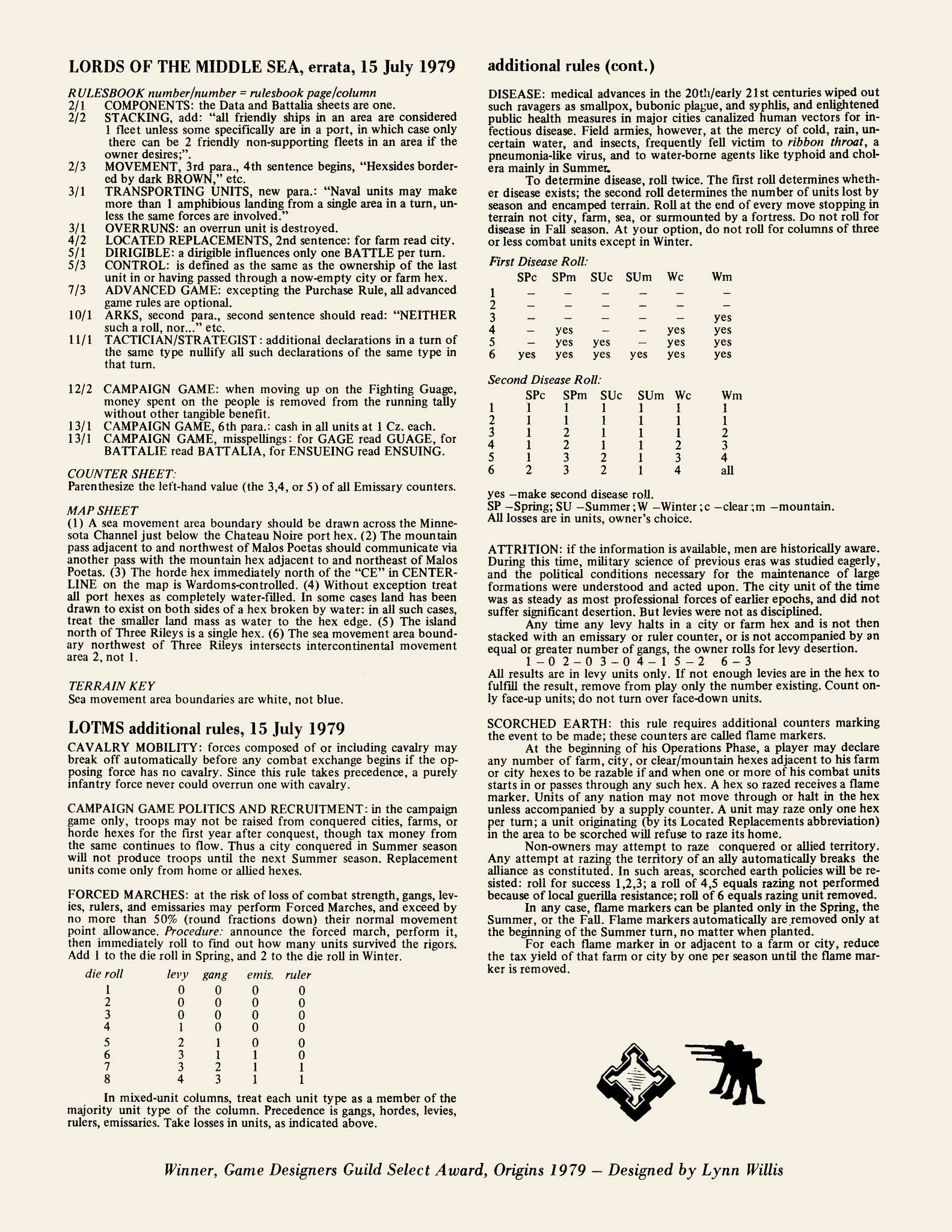
-- Lords of the Middle Sea errata from 1979 --
You can find these errata sheets in the first and second printings of the RQ2 boxed set, as well as Elfquest. Many early Chaosium catalogs noted that you could write for a free copy of the errata sheet for a variety of games as long as you included a stamped-self-addressed-envelope. (If you have one for Engage & Destroy, let me know!)
Around 1982, Chaosium switched to printing errata on the inside front and back covers (as needed) when reprinting rulebooks. The first example of this is the second printing of Call of Cthulhu in early 1982, followed shortly thereafter by the red cover version of the RQ2 rulebook found in the third printing of that boxed set (the brown and green cover versions do not have it printed in the book).
In a recent 'Out of the Suitcase' post I talked about how the Avalon Hill game Company released a 4-page RuneQuest Third Edition Errata booklet, but as far as I know these corrections never made it into the actual text of the rulebooks of the boxed versions, although the errata can be found in the back of the 1993 perfect bound RQ3 Deluxe Rulebook.
In the end, I pondered why Chaosium didn't just update the specific pages in the rulebook when they reprinted it? I finally hit upon the answer.
For our current books we can go into InDesign, update the words in the layout file, and send those corrected pages to the printer very quickly. But in the 1970s and 1980s that task took far more time, often too much time, and effort. Because back then "cut and paste" meant redoing paper story boards which had printed blocks of text and art painstakingly pasted onto them. So if you had a substantial change to make you might have to redo a number of pages, possibly even most of the layout boards for a book. When you have the choice of typing up a sheet or two of text as a handout to include in the box (or on inside covers) OR using an exacto knife, correction fluid, and many hours redoing numerous pages of layout boards, the first choice won out, at least until a new edition of the game would require a new layout as well*.
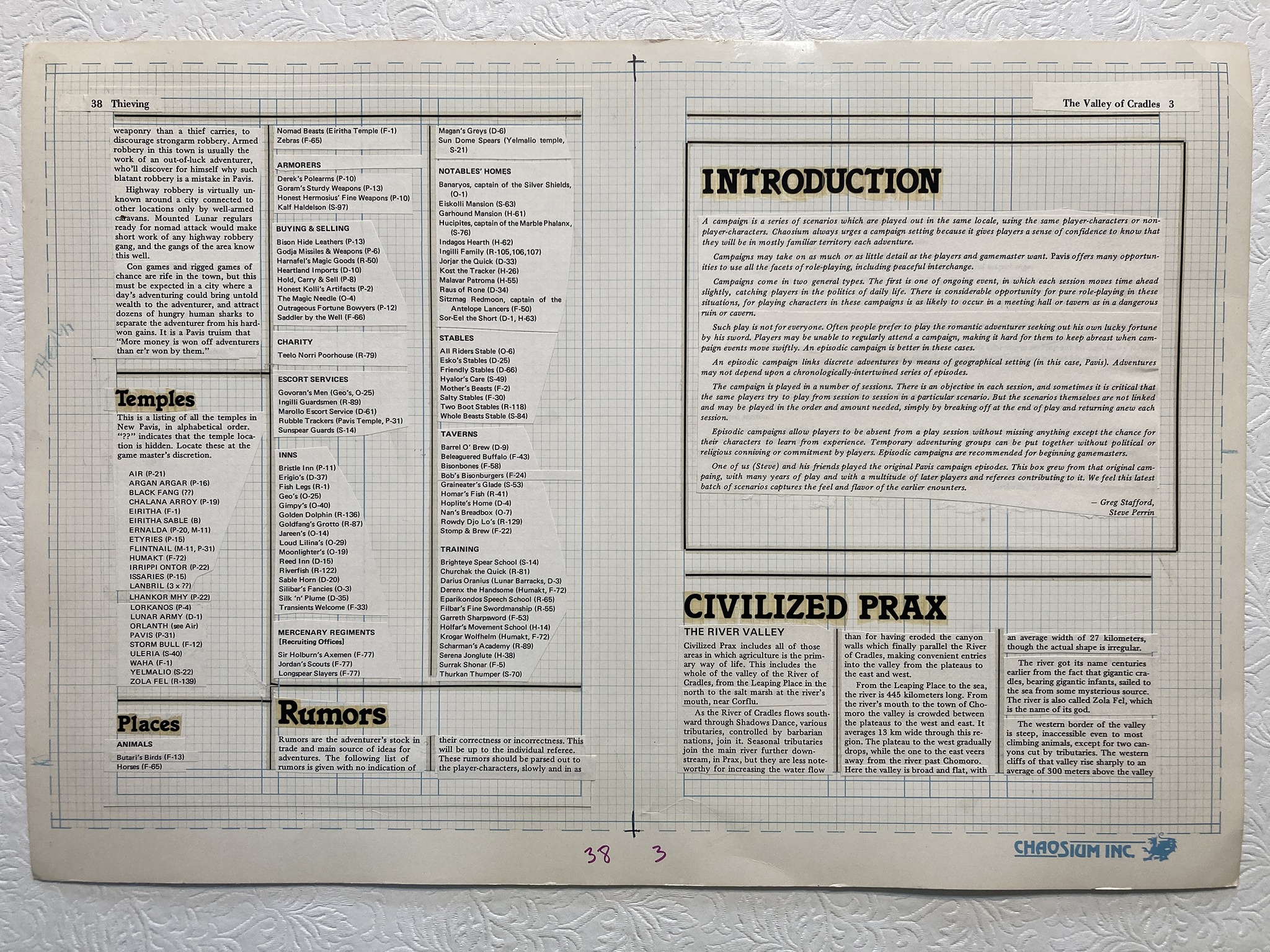
-- A typical cut and paste layout. Extra points if you recognize this as from the Pavis box set from 1982 --
Serendipitously, collectors chasing every printing benefit from these errata techniques. You can easily tell if that CoC rulebook is the second printing because the main text is all in brown ink AND there is errata printed on the inside back cover. The third printing used black ink. You have no way of knowing if an Elfquest boxed set is first or second printing if you look at just the box, but the eratta inside proves it's the second printing. The same applies to early boxed sets of Stormbringer too.
*I can only imagine the grief when someone noticed the oil painting for the cover of The Gateway Bestiary had the typo "Runequst" painted on it...
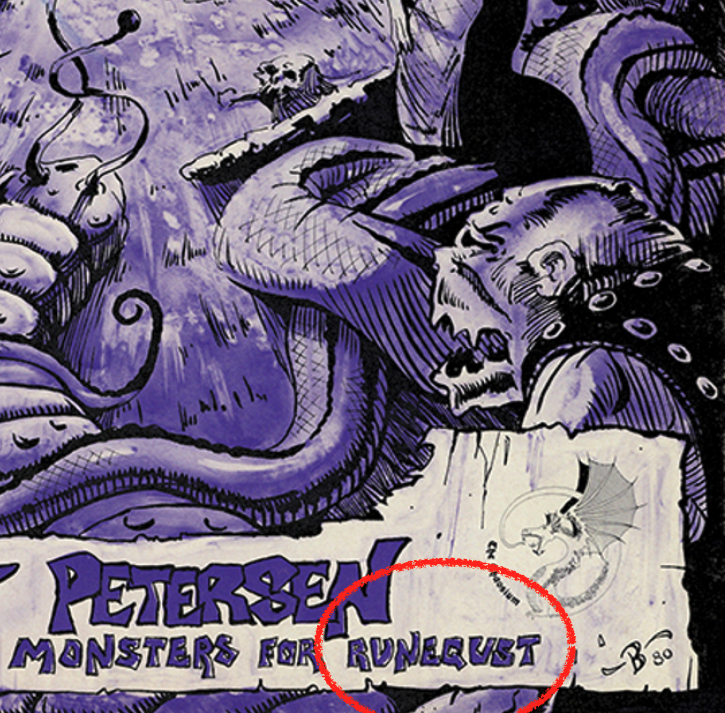
-- Shown at top of page: (clockwise from left) the Elfquest Errata sheet that accompanied the second printing of the boxed set; the Call of Cthulhu 2nd printing of the "brown ink" rulebook; the RuneQuest 2nd edition errata (it is on both the front and back inside covers; the printed single sheet of errata used in the early 2" RQ2 boxed sets. --
